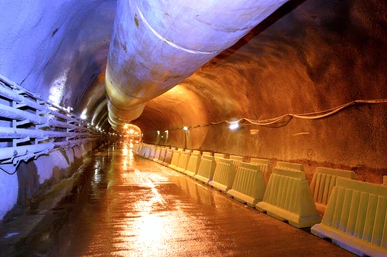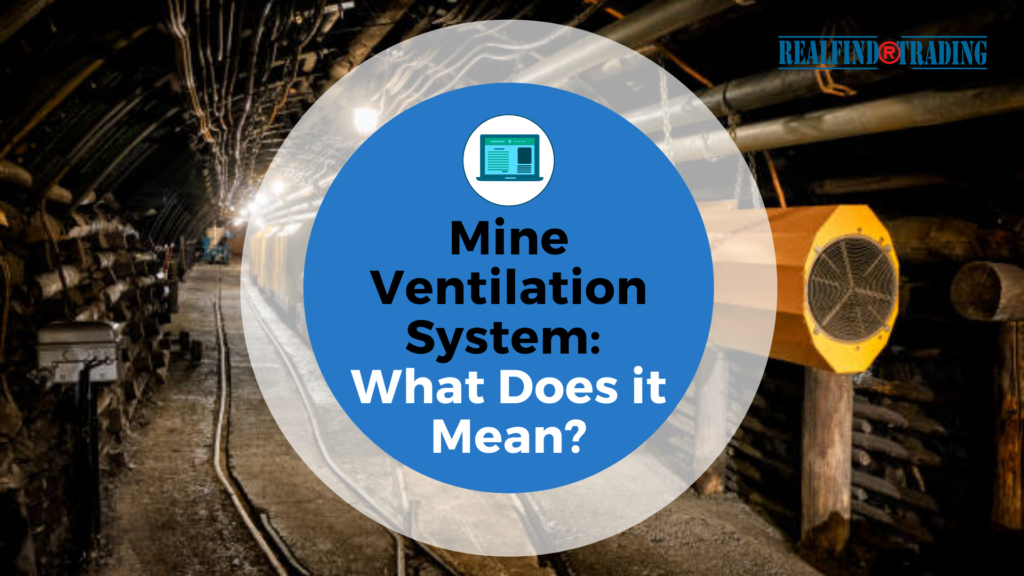Mine ventilation is the process of supplying sufficient fresh air to the underground mining ventilation system and working to achieve the purpose of ensuring proper distribution, use and controlling of the air that returns to the surface as contaminated air. Mine ventilation is very important because underground mining operations are often fraught with a lot of dangers; as tunneling through the earth presents the miners with an unfamiliar environment and several issues which affect health as well as safety of the workers. A lack of ventilation could result in fatalities because of exposure to dust that it generated from underground coal mining activities.

What is a mine ventilation system?
Mine ventilations terms like mine ventilation system should be clearly define to understand ventilation control of dust in coal mines. A mine ventilation system provides fresh air flow into the underground mine and expels contaminated air out of the underground mine. The mine ventilation system is available in various choices and sizes; however, selecting the right one is important to achieve maximum benefits. So, what are the major considerations when installing a mine ventilation system? – it should help achieve the following:
- Dilute and remove poisonous gases like NO2, SO2, CO and CO2.
- Removes dusts and noxious gases.
- Regulate the temperature in the mine.
- Remove gases from diesel engines, explosives and orebodies.
- Ensures proper breathing of the workers.
- Ensures there is sufficient ventilation flow, regardless of weather or season.
- Helps efficiently clear blast fumes, particularly when mine is not occupied.
The mine ventilation system consists of interconnected airways, control devices, mine ventilation fans and other components to function well. It can also represented as a network connecting the nodes, lines or the airways. The ventilation system that is installed should guarantee providing fresh air required to maintain human health and safety in the working area. Furthermore, Its sole mandate is to ensure the air quality standards in underground mining.
What are the different types of mine ventilation systems?
- Flow-through Ventilation System – this is the main circuit for the mine. The air that enters the mine from the surface via an audit, ventilations raise, or shaft; distributed through the mine. Moreover, the air flow is controlled using regulators and mine ventilation fans that are permanently mounted.
- Auxiliary Ventilation Systems – this type of ventilation system will take air from flow-through system, and it will distribute to mine via a temporary mine ventilation fan. Furthermore, the auxiliary fan and duct will force pushing fresh air.
What are the types of mine ventilation?
There are two types of mine ventilations namely:
- Natural Ventilation
- Mechanical Ventilation
Underground mine ventilation design plays a critical role in the types of mine ventilations. Natural mine ventilations is the process of supplying fresh air without using any mechanical systems. The external air moves into an enclose space because of pressure differences arising from natural forces. Natural mine ventilation distributes oxygen from fresh air which enhances pulmonary and heart function. Meanwhile, mechanical ventilations is used to supply air in areas where the miner operates, and this air is used to remove dust particles, noxious gases and regulation of temperature.
Pressure difference is created by operating one or more mine ventilation fans in an airway.
Each mine ventilation fan creates a certain amount of pressure, and that pressure; gradually lost as the air passes through the airway against its resistance. There are two main types of exhaust fans use in underground mine ventilations. These are the axial fan and the centrifugal fan. The axial fan looks like a propeller, and it draws air straight through the fan. Furthermore, the centrifugal fans look more like squirrel cages and draw air into the center of the fan and exhaust air at a perpendicular angle. Sufficient volume of air is require for proper ventilations which takes electric power to drive the fan.
How to improve mine ventilations?
There are several methods of improving mine ventilations through reducing dust exposure of longwall face and continuous mining workers. These methods includes:
1. Installation and Maintenance of a Gob Curtain
Adequate ventilations of the longwall panel involves supplying the required volume of air to the headgate and maintaining that airflow along the face. Often, loss of air into the gob in the headgate area prevents the maximum utilization of the air intended to ventilate the longwall face.
2. Face Ventilation
Ventilations is the principal method of controlling respirable dust on the longwall face. Providing adequate amounts of air to dilute and carry airborne dust down the face and prevent it from migrating into the walkway has been and continues to be a goal for longwall operators. Moreover, as air velocities increase, it is important to ensure sufficient wetting of the coal is provided to minimize the potential of increased entrainment with higher air velocities.
3. Ventilated Cutting Drums
There designed to reduce the amount of dust from the cutting zone through water powered dust capture tubes build into the hub of the shearer drum. Moreover, dust control is being achieve by capture and suppression at the source which improves mine ventilations through prevention of the dust from being airborne.
4. Blowing Face Ventilation
Clean air is blown toward the face and sweeps the dust-laden air toward the return entries. Furthermore, this system allows the continuous miner operator to positioned in the clean discharge air at the end of the blowing curtain or tubing.
5. Exhausting Face Ventilation
Clean air sweeps the face, and the dust-laden air is then drawn behind the return curtain or through the exhaust tubing to the return entries. The system will keep mobile equipment in fresh air and affords the continuous miner operator more freedom of movement than a blowing ventilations system.
Conclusion:
Mine ventilations systems are important for the safe operation of underground mines and provided fresh air flow and remove the contaminated air. Underground mine ventilations systems also lower the heat and humidity of working surfaces. Furthermore, poor mine ventilations in the underground mines is one of the main causes of over exposure to dust in coal mines. Inhalation of respirable coal dust results in coal mine workers’ pneumoconiosis and eventually causes death. Exposure to coal dust kills! Dealing with coal mine dust at its source is a matter of saving lives.
For more info, visit this link page.
Sources(s): https://globalroadtechnology.com/

